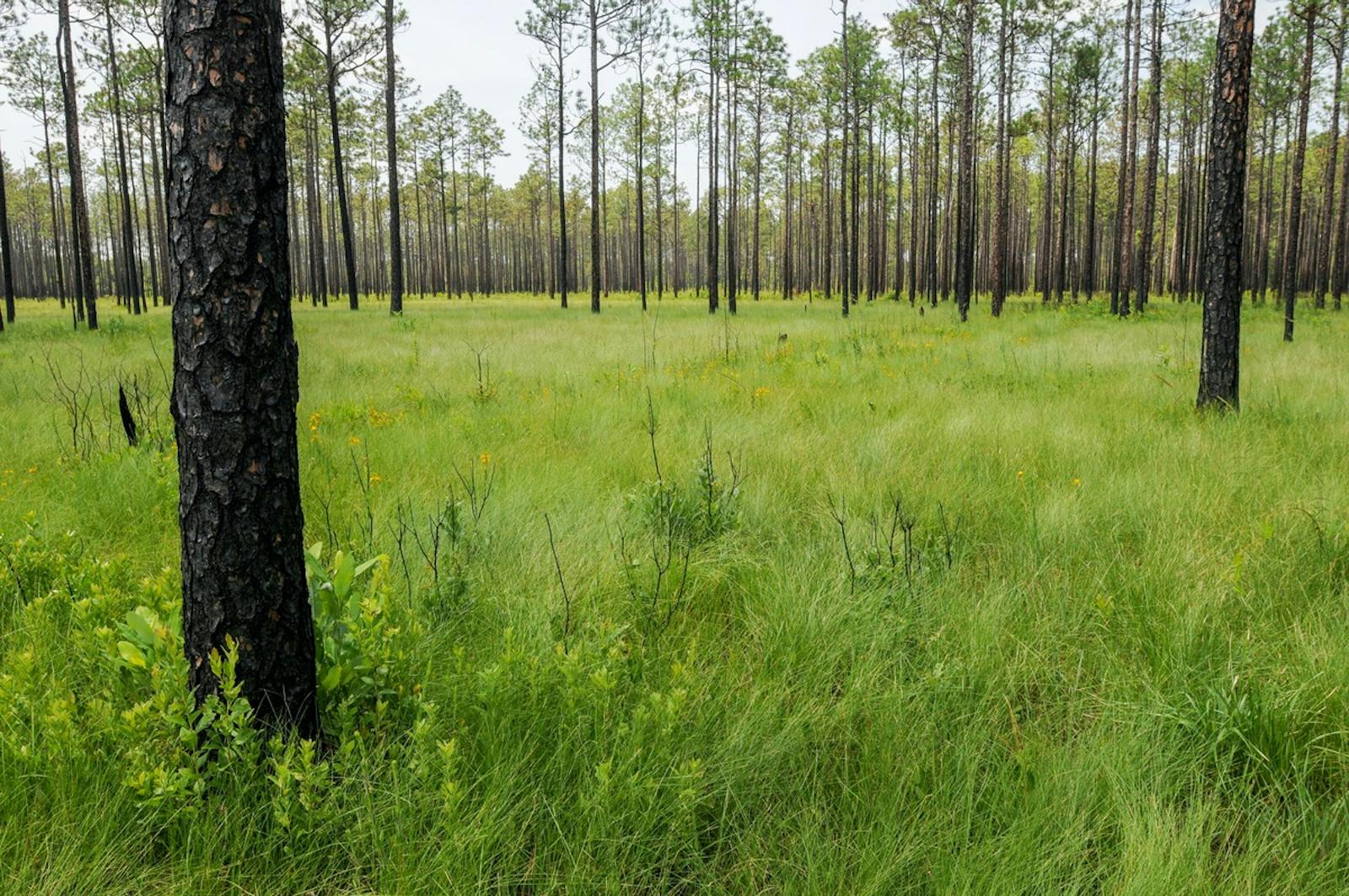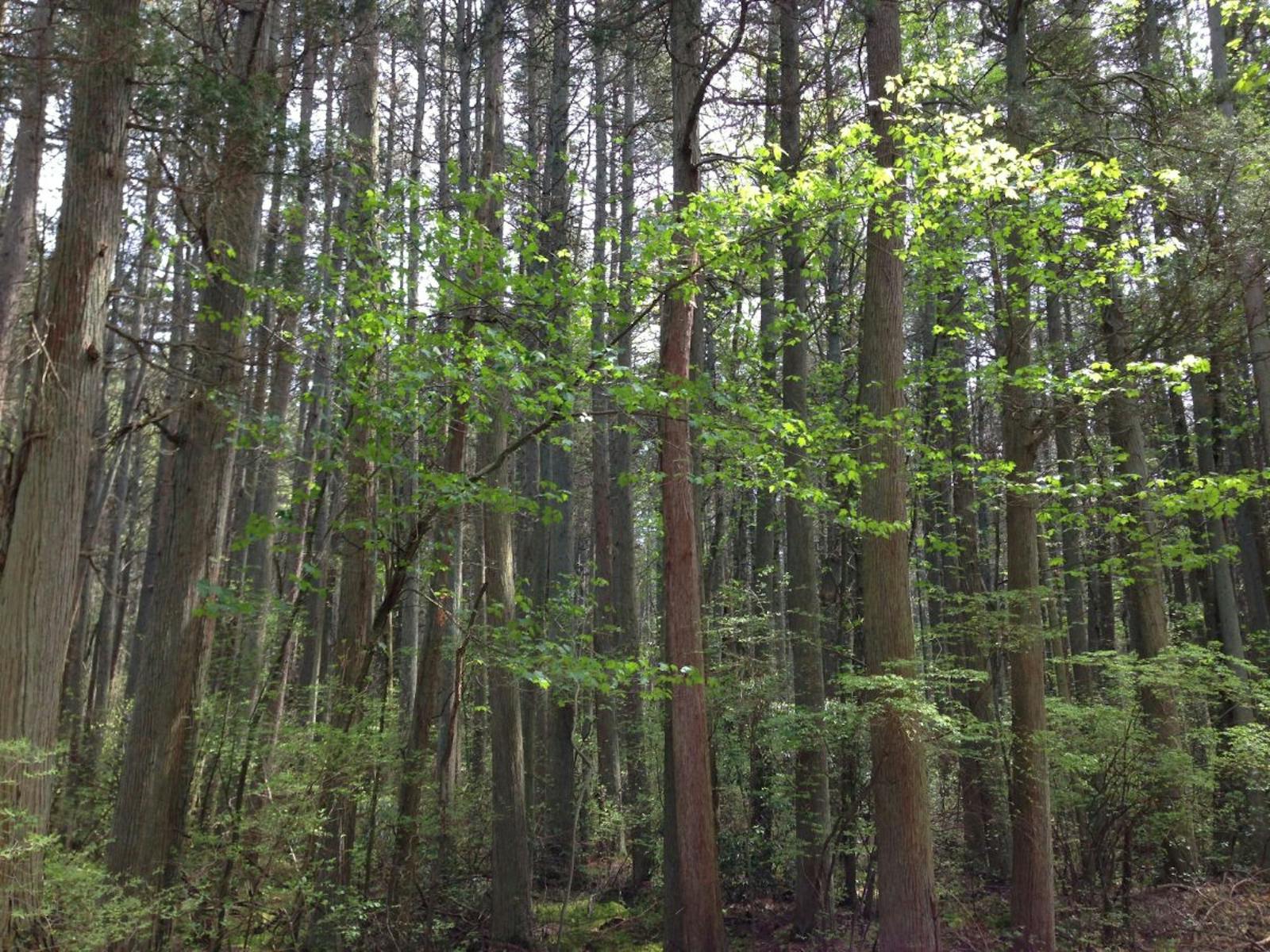Mid-Atlantic US Coastal Savannas
The ecoregion’s land area is provided in units of 1,000 hectares. The conservation target is the Global Safety Net (GSN1) area for the given ecoregion. The protection level indicates the percentage of the GSN goal that is currently protected on a scale of 0-10. N/A means data is not available at this time.
Bioregion: Southeast Savannas & Riparian Forests (NA25)
Realm: Northern America
Ecoregion Size (1000 ha):
7865
Ecoregion ID:
393
Conservation Target:
13%
Protection Level:
8
States: United States: GA, SC, NC, VA, MD, DE, PA, NJ
The Mid-Atlantic US Coastal Savannas ecoregion is a northern extension of the vast Southeast US Conifer Savannas ecoregion. It extends from coastal Georgia northward through Maryland, Delaware, and small portions of Pennsylvania and New Jersey. This ecoregion is part of the North American Coastal Plain, which in 2016 was formally recognized by the Critical Ecosystem Partnership Fund as a global biodiversity hotspot. Species richness and endemism are particularly high among plants, freshwater fish, amphibians, reptiles, and several invertebrate groups. Recent studies show a globally significant endemism hotspot for lichens here.
This ecoregion is warm temperate in climate. It is the second largest conifer-dominated ecoregion east of the Mississippi River, after the Southeast US Conifer Savannas ecoregion. Like that ecoregion, most of the natural vegetation in the Mid-Atlantic is adapted to frequent fire. With a frequency of lightning strikes only slightly lower than that of the more southern portion of the Coastal Plain, much of the region was maintained in an open savanna condition prior to European settlement.

The flagship species of the Mid-Atlantic US Coastal Savannas ecoregion is the Atlantic white cedar. Image credit: Creative Commons
Longleaf pine is the dominant savanna tree north to extreme southeastern Virginia. Extensive stands remain in the Green Swamp of southeastern North Carolina and adjacent South Carolina and in the Sandhills, the innermost portion of the Coastal Plain along the Fall Line adjacent to the Piedmont in the Carolinas and Georgia. Northward from here, pond pine and pitch pine occur, but in shrubbier habitats than typical longleaf pine communities.
This ecoregion is especially distinct for its extensive wetlands, including Atlantic white cedar swamps, pocosins (shrub swamps, often with embedded pine islands), Carolina bays (elliptical depression wetlands), and bald cypress/swamp tupelo floodplain swamps along rivers. Some of the oldest bald cypress trees in the world, as well as national champion trees of many other species, occur in large remnants such as the 106-km2 Congaree National Park in South Carolina. The extinct ivory-billed woodpecker had one of its last remaining populations in this swamp. Collectively, these wetlands are among the most biologically important ecosystems in North America.
Atlantic white cedar once dominated many of the wetlands of this ecoregion. This tree, which may reach 1,000 years of age, has suffered massive declines due to logging and wetland alteration. Besides longleaf pine savannas and freshwater wetlands, other important natural communities include vast salt and brackish marshes along the coast and various maritime communities on the many barrier “sea islands” just offshore from the mainland.
This ecoregion supports diverse faunal communities. Mammals including the nine-banded armadillo and Virginia opossum can be found here. Mixed pine-oak forests host avifauna such as the brown-headed nuthatch, yellow-throated warbler, northern parula warbler, and eastern bluebird; less common birds like Bachman sparrow and red-cockaded woodpecker also live in this ecoregion. The bottomland forests support abundant arthropods, produce mast that sustains migratory birds during the winter, and produce boles, branch cavities, and rotting logs that support various detritivores and hole-nesting species. In the extreme southeast regions the large American alligator can be found along tidal inlets and marsh areas.
Across the Coastal Plain as a whole, habitat loss is extensive. A recent study found 86% of the vegetation highly altered or converted, including 73% of forests, 96% of savannas and woodlands, and 98% of grasslands, marshes, and glades. Many species, including endemics found nowhere else in the world, are on the brink of extinction. Human population growth rates are among the highest in the world, leading to massive urbanization and habitat destruction. For example, along the Fall Line are several rapidly growing cities, including Fayetteville, NC, Columbia, SC, and Augusta, GA.
Priority conservation actions for the next decade are to: 1) create strong incentives for population stabilization, especially through reduced immigration to the region, which is responsible for the vast majority of population growth; 2) greatly increase federal, state, and local acquisition of conservation lands; and 3) improve management of existing conservation lands, especially with respect to management of fire and water.
Citations
1. Noss, R.F., W.J. Platt, B.A. Sorrie, A. S. Weakley, D.B. Means, J. Costanza, and R.K. Peet. 2015. How global biodiversity hotspots may go unrecognized: Lessons from the North American Coastal Plain. Diversity and Distributions 21:236-244.
2. Sorrie, B.A., and A.S. Weakley. 2001. Coastal Plain plant endemics: phytogeographic patterns. Castanea 66:50-82.
3. Ricketts, T.H. et al. 1999. Terrestrial Ecoregions of North America: A Conservation Assessment. Island Press, Washington, D.C.




